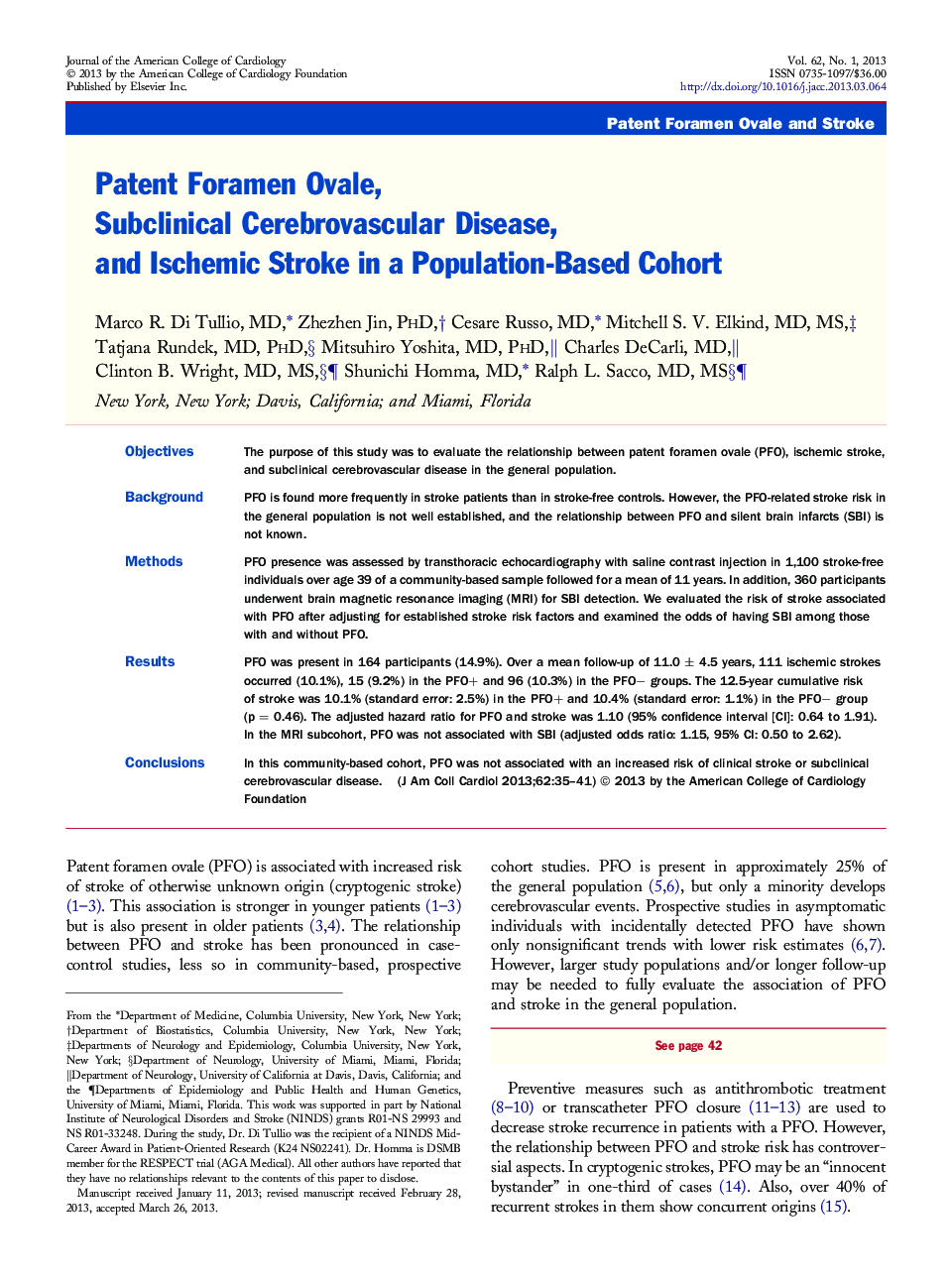| Article ID | Journal | Published Year | Pages | File Type |
|---|---|---|---|---|
| 2947631 | Journal of the American College of Cardiology | 2013 | 7 Pages |
ObjectivesThe purpose of this study was to evaluate the relationship between patent foramen ovale (PFO), ischemic stroke, and subclinical cerebrovascular disease in the general population.BackgroundPFO is found more frequently in stroke patients than in stroke-free controls. However, the PFO-related stroke risk in the general population is not well established, and the relationship between PFO and silent brain infarcts (SBI) is not known.MethodsPFO presence was assessed by transthoracic echocardiography with saline contrast injection in 1,100 stroke-free individuals over age 39 of a community-based sample followed for a mean of 11 years. In addition, 360 participants underwent brain magnetic resonance imaging (MRI) for SBI detection. We evaluated the risk of stroke associated with PFO after adjusting for established stroke risk factors and examined the odds of having SBI among those with and without PFO.ResultsPFO was present in 164 participants (14.9%). Over a mean follow-up of 11.0 ± 4.5 years, 111 ischemic strokes occurred (10.1%), 15 (9.2%) in the PFO+ and 96 (10.3%) in the PFO− groups. The 12.5-year cumulative risk of stroke was 10.1% (standard error: 2.5%) in the PFO+ and 10.4% (standard error: 1.1%) in the PFO− group (p = 0.46). The adjusted hazard ratio for PFO and stroke was 1.10 (95% confidence interval [CI]: 0.64 to 1.91). In the MRI subcohort, PFO was not associated with SBI (adjusted odds ratio: 1.15, 95% CI: 0.50 to 2.62).ConclusionsIn this community-based cohort, PFO was not associated with an increased risk of clinical stroke or subclinical cerebrovascular disease.
